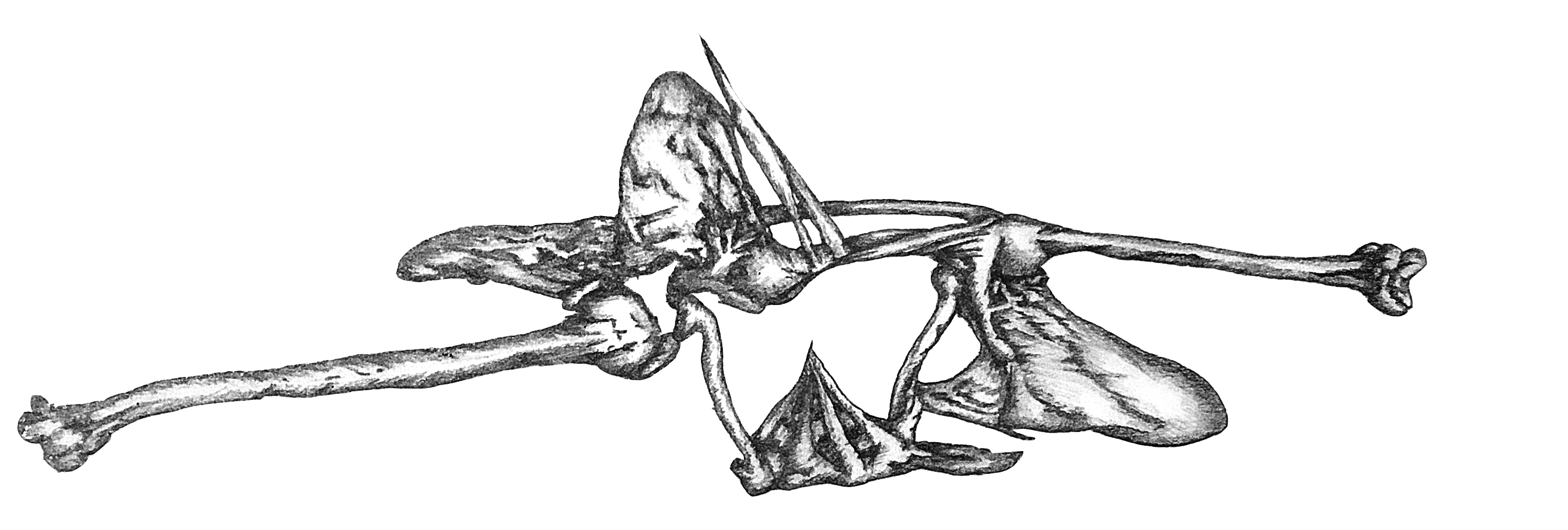










SCOPIC OBFUSCATION The impact of Gould Court, as in
much of contemporary architecture, is predicated on a scopic/perspectival
experience. It preemptively orders the reading of the building, supposing that
it can prescribe the parti
before the visitor has had time to actually
interface with the work. Consequently,
visitors leave with an incomplete and distant understanding of a building to
the detriment of the somatic senses.
This installation proposal is a dividing up of the site, compartmentalizing and expanding sensory experience within the Gould Hall atrium. Platforms are supported within spaces created by stretched red fabrics. The curvalinear forms clutter the vacuous atrium, interrupting the ordered view while connecting the newly formed spaces to each other as well as to framed perceptual experiences like light from above or sound from below. Sight is befuddled and discouraged within these ambiguous shapes with the intent of focusing the occupant’s attention on their somatic experience: The quivering or swaying of the light structure, vibrations of others walking, the sounds reverberating from an unseen chamber, or the presumable increase in temperature within the enclosed space.
Interfacing with the building from within these fragmented episodes offers an incomplete insight alone, provoking following questions and encouraging the visitor to explore with exhaustive intent that they may understand the building more fully.
Works of fashion defer to the red fabrics used in the installation where the form and color recall the flesh and organs of the perceptual body. Archetypal forms like the three piece suit and black turtle-neck bear the standards of competing modernities, struggling against each other for ground. The western origins of perspective and optic traditions are represented by the circular brimmed caps, chaperons, and slit sleeves of Renaissance Europe. The selective reveal that these sleeves allow also parallels the use of sheer materials layered in different quantities to modulate the voyeur’s gaze. The vision of the model, too, is hindered by headwear that redirects emphasis to the feeling of wearing the garment.
DAYTON CLARK
This installation proposal is a dividing up of the site, compartmentalizing and expanding sensory experience within the Gould Hall atrium. Platforms are supported within spaces created by stretched red fabrics. The curvalinear forms clutter the vacuous atrium, interrupting the ordered view while connecting the newly formed spaces to each other as well as to framed perceptual experiences like light from above or sound from below. Sight is befuddled and discouraged within these ambiguous shapes with the intent of focusing the occupant’s attention on their somatic experience: The quivering or swaying of the light structure, vibrations of others walking, the sounds reverberating from an unseen chamber, or the presumable increase in temperature within the enclosed space.
Interfacing with the building from within these fragmented episodes offers an incomplete insight alone, provoking following questions and encouraging the visitor to explore with exhaustive intent that they may understand the building more fully.
Works of fashion defer to the red fabrics used in the installation where the form and color recall the flesh and organs of the perceptual body. Archetypal forms like the three piece suit and black turtle-neck bear the standards of competing modernities, struggling against each other for ground. The western origins of perspective and optic traditions are represented by the circular brimmed caps, chaperons, and slit sleeves of Renaissance Europe. The selective reveal that these sleeves allow also parallels the use of sheer materials layered in different quantities to modulate the voyeur’s gaze. The vision of the model, too, is hindered by headwear that redirects emphasis to the feeling of wearing the garment.
DAYTON CLARK

